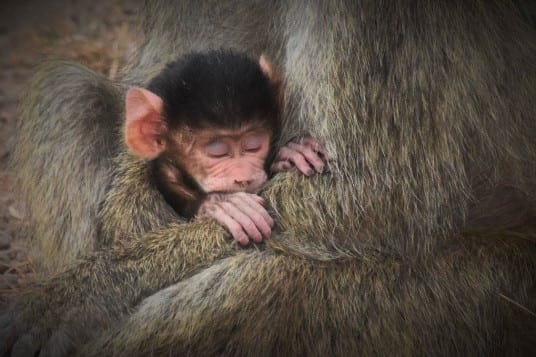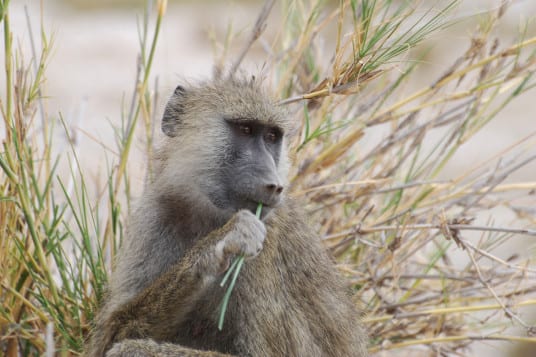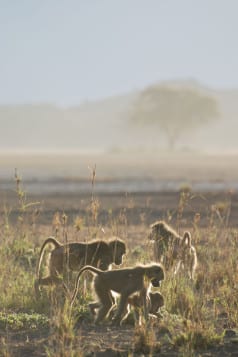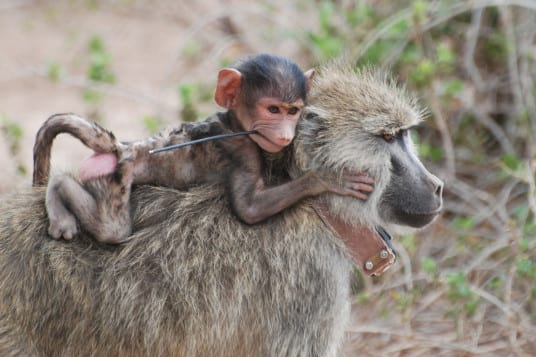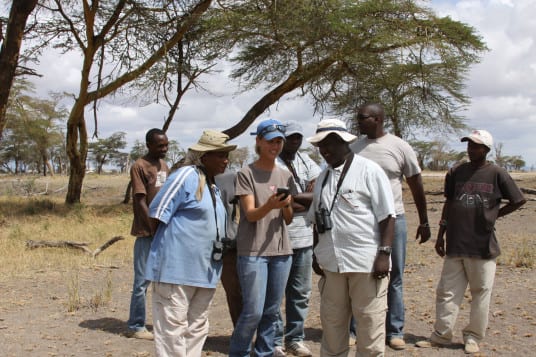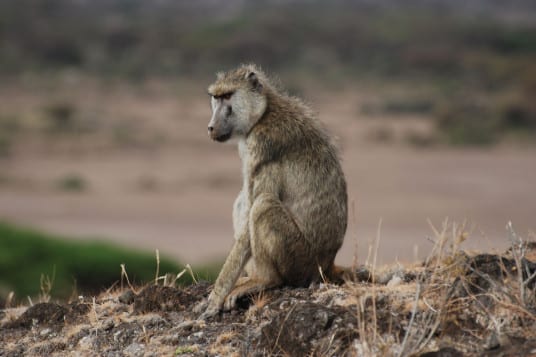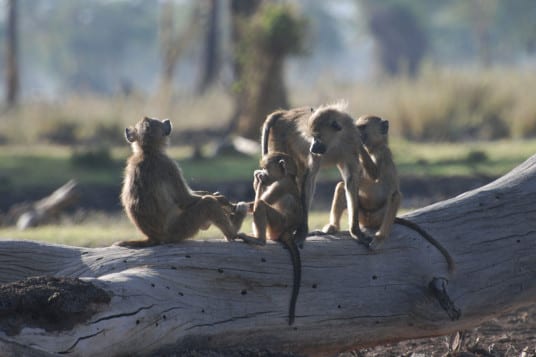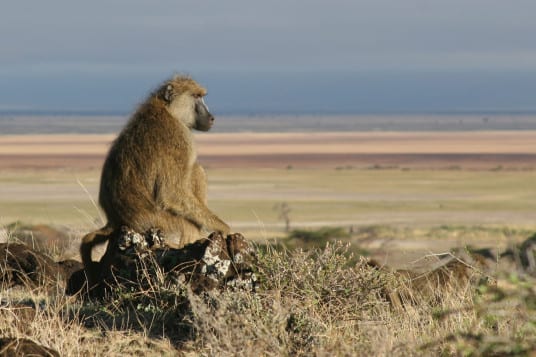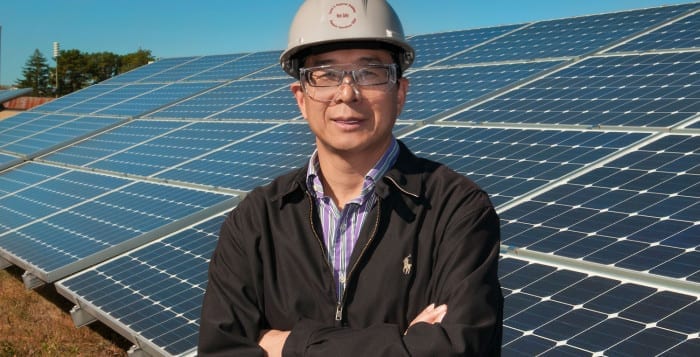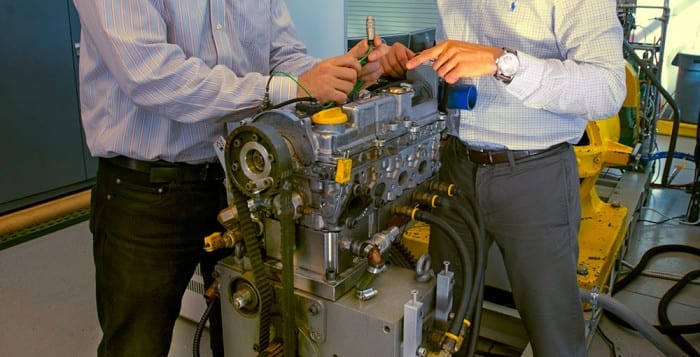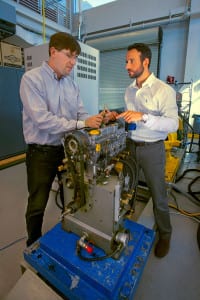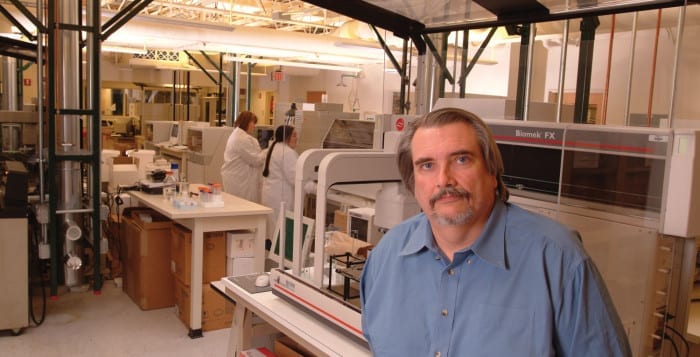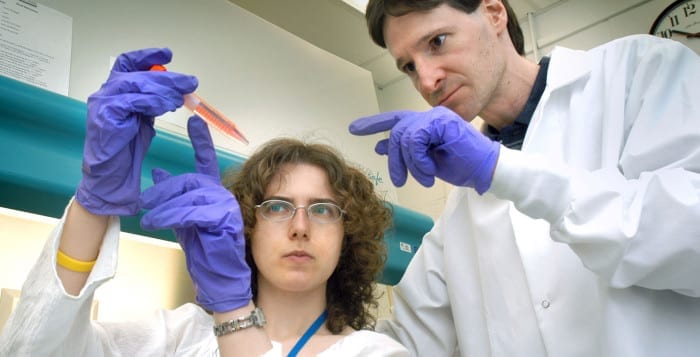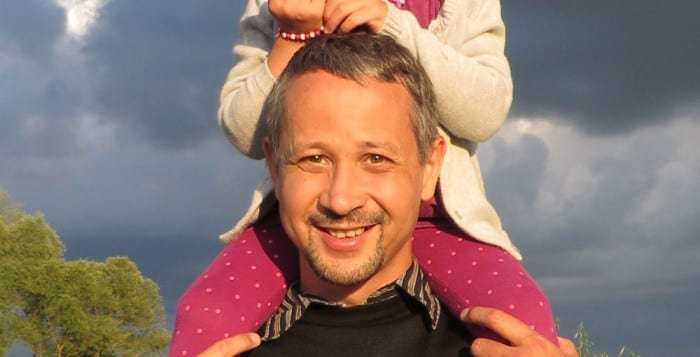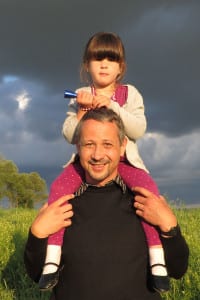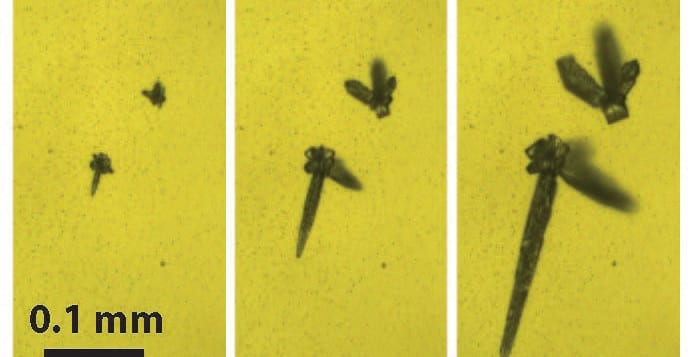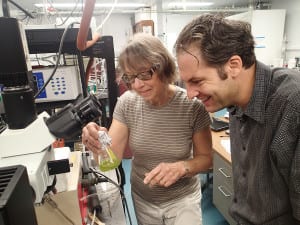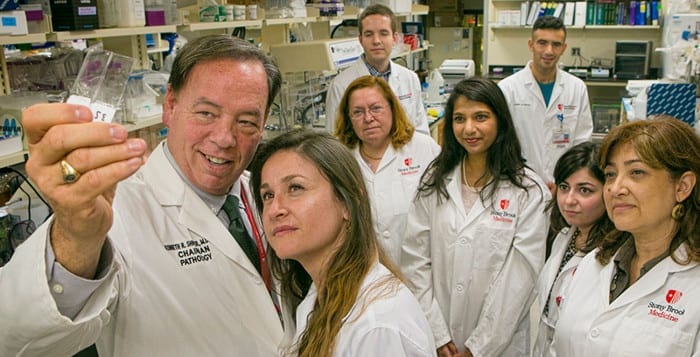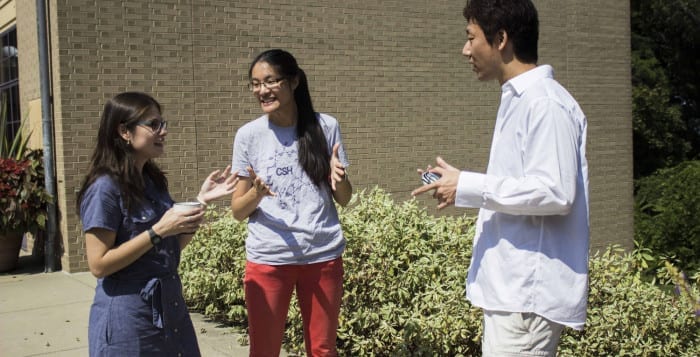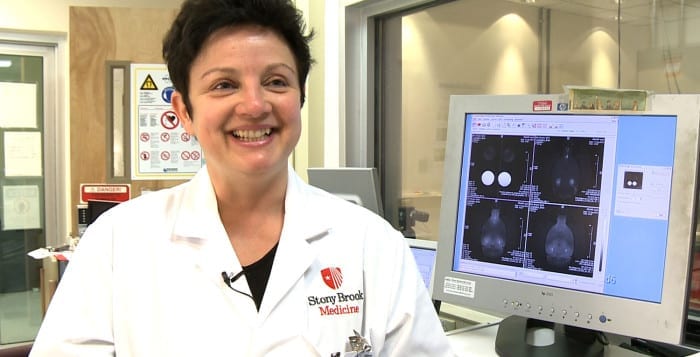While she’s brushing her teeth, she can hear elephants passing outside. She’s spotted lion footprints in the ground outside an electrified fence that gives her comfort when she sleeps on a bed in a tent at night.
Catherine Markham, an assistant professor in the Department of Anthropology at Stony Brook University, has been traveling to Kenya for the last 10 years to study baboons as a part of the Amboseli Baboon Research Project, a decades-long study of baboons on a savannah north of Mt. Kilimanjaro.
Markham and her colleagues recently discovered that there is something of a Goldilocks phenomenon when it comes to group size for baboons. A group that has a smaller number of baboons has to spend more time watching out for predators like leopards, lions and hyenas and foraging carefully amid competition with other baboon groups, while a group that has too many members travels over greater distances to find food.
Markham measured the amount of stress adult females felt by monitoring a glucocorticoid hormone. The least stressed baboons were the ones in the mid-sized group, where the benefits of social living — companions to pick bugs off their fur, extra eyes to watch out for predators and potential mates to raise and protect offspring — outweighed the challenges of competing with other group members for food. She published her results recently in the journal Proceedings of the National Academy of Sciences.
Susan Alberts, the Robert F. Durden professor of biology at Duke University, suggested Markham’s research provided “the most compelling empirical evidence ever produced that animals living in social groups experience a tension” within and between groups that is resolved at an intermediate size.
Alberts said that in this sweet spot for group size, she’d expect individuals would live longer and have higher fertility.
“This has changed the way we think of the costs and benefits of groups of different sizes,” Alberts said.
Jeanne Altmann, a founder of the Amboseli Baboon Research Project and emeritus professor of ecology and evolutionary biology at Princeton, said research like Markham’s will “facilitate predicting and potentially assisting with the challenges social groups of diverse species, including humans, will face in the changing environment of the future.”
Altmann added it was “especially wonderful to see how much the current generation of young scientists exemplified by Catherine Markham can accomplish by taking what’s come before them and developing new techniques and insights.”
As a behavioral ecologist, Markham is interested in how baboons, and other animals, manage the trade-off in group living.
The next set of questions could address whether group size, or hormone levels, can serve as a predictor for a fissioning of social groups, which happens infrequently.
When groups fission, social bonds break permanently, which can cause a different kind of stress that may help explain why groups that are above optimal size continue to stay together, despite the stress and intragroup competition, Alberts said.
While she’s observing the baboons, Markham generally tries to stay at least 10 meters from them. Scientists like Markham, or anyone else who visits Amboseli, need to follow rules that extend beyond the proximity to animals.
When she’s conducting research, she makes sure she’s with at least one other person. Once, she was watching a female baboon closely when a car came up behind her.
“This wonderful Kenyan, who is a good friend, said, ‘I’m saving you from the elephant.’ I looked and, sure enough, the elephant who, at my last check had been on the distant horizon, wanted to investigate” Markham and the baboons.
The elephant was close enough that she knew it was time to “get in the car.”
To gain insight into the stress levels of these baboons without poking or prodding them, Markham and her collaborators studied the clues the baboons left behind. They watched the animals carefully and, once an animal relieved herself and left the area, the researchers retrieved the droppings.
“It’s not the most glamorous part of my job, that’s for sure,” she said. “At this point, I am so motivated by the question and I see it as a tool to noninvasively understand what these animals are going through. It’s a way to have some window into their internal state without having to dart them.”
She said the success of a program like this wouldn’t be possible without the dedication and knowledge of an experienced and talented team of Kenyan researchers. The Kenyans know the individual baboons well, using scars on their faces, body size or individual markings.
Markham, who lives in St. James and is originally from Maryland, said she became interested in nature in part because of trips with her father Julian Markham to a book store, where she would buy National Geographic magazines for a dime or a quarter.
Markham, who joined the staff at Stony Brook last year, said she is excited to be a part of a strong anthropology program.
As for her time in Kenya, she gets to live out her childhood dreams, where, she finds the “ecosystem and animals beautiful. These are some of the happiest times in my life. Watching animals in the wild is something so special.”
Members of the community can hear directly from Markham at a talk she’s giving entitled the “Evolution of Social Complexity in Chimpanzees and Baboons” on Nov. 20 at 7:30 p.m. at the Earth and Space Sciences Lecture Hall 001 on the west campus of Stony Brook University.

